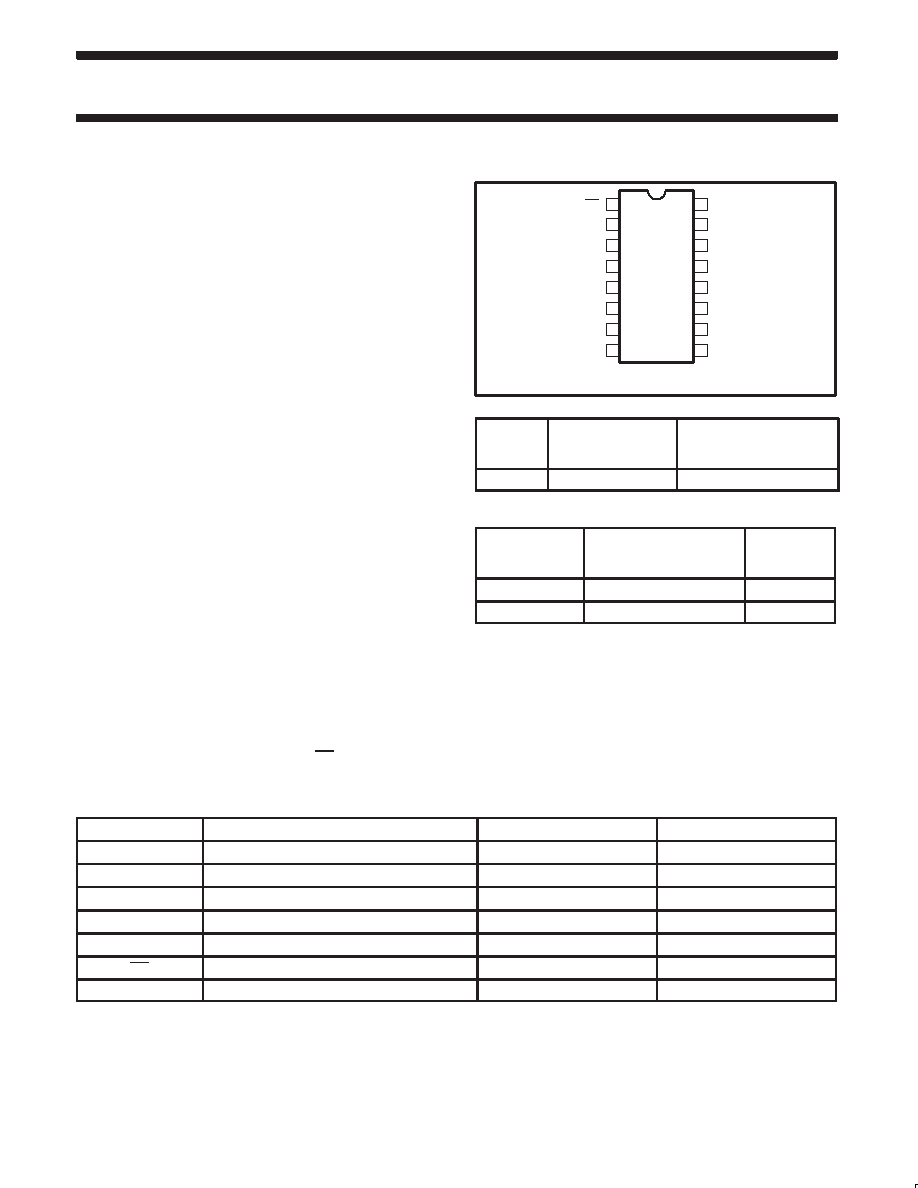- 您現(xiàn)在的位置:買(mǎi)賣(mài)IC網(wǎng) > PDF目錄24665 > 933784230623 (NXP SEMICONDUCTORS) F/FAST SERIES, 4-BIT BIDIRECTIONAL PARALLEL IN PARALLEL OUT SHIFT REGISTER, TRUE OUTPUT, PDSO16 PDF資料下載
參數(shù)資料
| 型號(hào): | 933784230623 |
| 廠商: | NXP SEMICONDUCTORS |
| 元件分類(lèi): | 計(jì)數(shù)移位寄存器 |
| 英文描述: | F/FAST SERIES, 4-BIT BIDIRECTIONAL PARALLEL IN PARALLEL OUT SHIFT REGISTER, TRUE OUTPUT, PDSO16 |
| 封裝: | 3.90 MM, PLASTIC, MS-012AC, SOT-109-1, SO-16 |
| 文件頁(yè)數(shù): | 3/10頁(yè) |
| 文件大小: | 99K |
| 代理商: | 933784230623 |

Philips Semiconductors
Product specification
74F194
4-bit bidirectional universal shift register
2
April 4, 1989
853–0354 96224
FEATURES
Shift right and shift left capability
Synchronous parallel and serial data transfer
Easily expanded for both serial and parallel operation
Asynchronous Master Reset
Hold (do nothing) mode
DESCRIPTION
The functional characteristics of the 74F194 4-Bit Bidirectional Shift
Register are indicated in the Logic Diagram and Function Table. The
register is fully synchronous, with all operations taking place in less
than 9ns (typical) for 74F, making the device especially useful for
implementing very high speed CPUs, or for memory buffer registers.
The 74F194 design has special logic features which increase the
range of application. The synchronous operation of the device is
determined by two Mode Select inputs, S0 and S1. As shown in the
Mode Select-Function Table, data can be entered and shifted from
left to right (shift right, Q0
→Q1, etc.), or right to left (shift left,
Q3
→Q2, etc.), or parallel data can be entered, loading all 4 bits of
the register simultaneously. When both S0 and S1 are Low, existing
data is retained in a hold (do nothing) mode. The first and last
stages provide D-type Serial Data inputs (DSR, DSL) to allow
multistage shift right or shift left data transfers without interfering
with parallel load operation. Mode Select and data inputs on the
74F194 are edge-triggered, responding only to the Low-to-High
transition of the Clock (CP). Therefore, the only timing restriction is
that the Mode Select and selected data inputs must be stable one
setup time prior to the Low-to-High transition of the clock pulse.
Signals on the Mode Select, Parallel Data (D0–D3) and Serial Data
(DSR, DSL) can change when the clock is in either state, provided
only the recommended setup and hold times, with respect to the
clock rising edge, are observed. The four Parallel Data inputs
(D0–D3) are D-type inputs. Data appearing on (D0–D3) inputs when
S0 and S1 are High is transferred to the Q0–Q3 outputs
respectively, following the next Low-to-High transition of the clock.
When Low, the asynchronous Master Reset (MR) overrides all other
input conditions and forces the Q outputs Low.
PIN CONFIGURATION
16
15
14
13
12
11
10
7
6
5
4
3
2
1
DSL
VCC
Q3
CP
S1
Q2
Q0
Q1
MR
DSR
D3
D0
D1
D2
9
8
GND
S0
SF00167
TYPE
TYPICAL fMAX
TYPICAL
SUPPLY CURRENT
(TOTAL)
74F194
150MHz
33mA
ORDERING INFORMATION
DESCRIPTION
COMMERCIAL RANGE
VCC = 5V ±10%,
Tamb = 0°C to +70°C
PKG DWG #
16-pin plastic DIP
N74F194N
SOT38-4
16-pin plastic SO
N74F194D
SOT109-1
INPUT AND OUTPUT LOADING AND FAN-OUT TABLE
PINS
DESCRIPTION
74F (U.L.) HIGH/LOW
LOAD VALUE HIGH/LOW
D0–D3
Parallel data inputs
1.0/1.0
20
A/0.6mA
DSR
Serial data input (Shift Right)
1.0/1.0
20
A/0.6mA
DSL
Serial data input (Shift Left)
1.0/1.0
20
A/0.6mA
S0, S1
Mode Select inputs
1.0/1.0
20
A/0.6mA
CP
Clock Pulse input (active rising edge)
1.0/1.0
20
A/0.6mA
MR
Asynchronous master Reset input (Active Low)
1.0/1.0
20
A/0.6mA
Q0–Q3
Data outputs
50/33
1.0mA/20mA
NOTE: One (1.0) FAST unit load is defined as: 20
A in the High state and 0.6mA in the Low state.
相關(guān)PDF資料 |
PDF描述 |
|---|---|
| 933784230602 | F/FAST SERIES, 4-BIT BIDIRECTIONAL PARALLEL IN PARALLEL OUT SHIFT REGISTER, TRUE OUTPUT, PDSO16 |
| 933672890602 | F/FAST SERIES, 4-BIT BIDIRECTIONAL PARALLEL IN PARALLEL OUT SHIFT REGISTER, TRUE OUTPUT, PDIP16 |
| 0560-6600-AA | Isolation Transformer |
| 933784240602 | F/FAST SERIES, DUAL 5-INPUT NOR GATE, PDSO14 |
| 933784240623 | F/FAST SERIES, DUAL 5-INPUT NOR GATE, PDSO14 |
相關(guān)代理商/技術(shù)參數(shù) |
參數(shù)描述 |
|---|---|
| 9337-A17R | 制造商:GC Electronics 功能描述: |
| 9337C | 制造商:Hubbell Premise Wiring 功能描述: |
| 9337-CHR-100 | 制造商:Belden Inc 功能描述: |
| 9337CKE100M | 制造商:RFMD 制造商全稱(chēng):RF Micro Devices 功能描述:380W GaN WIDEBAND PULSED |
| 9337CMG | 制造商:Apex Tool Group 功能描述:7 IN. DIAGONAL CUTTING S J PLIERS W/CO-MOLDED GRIPS, LASER HARDENED EDGES, CDD |
發(fā)布緊急采購(gòu),3分鐘左右您將得到回復(fù)。